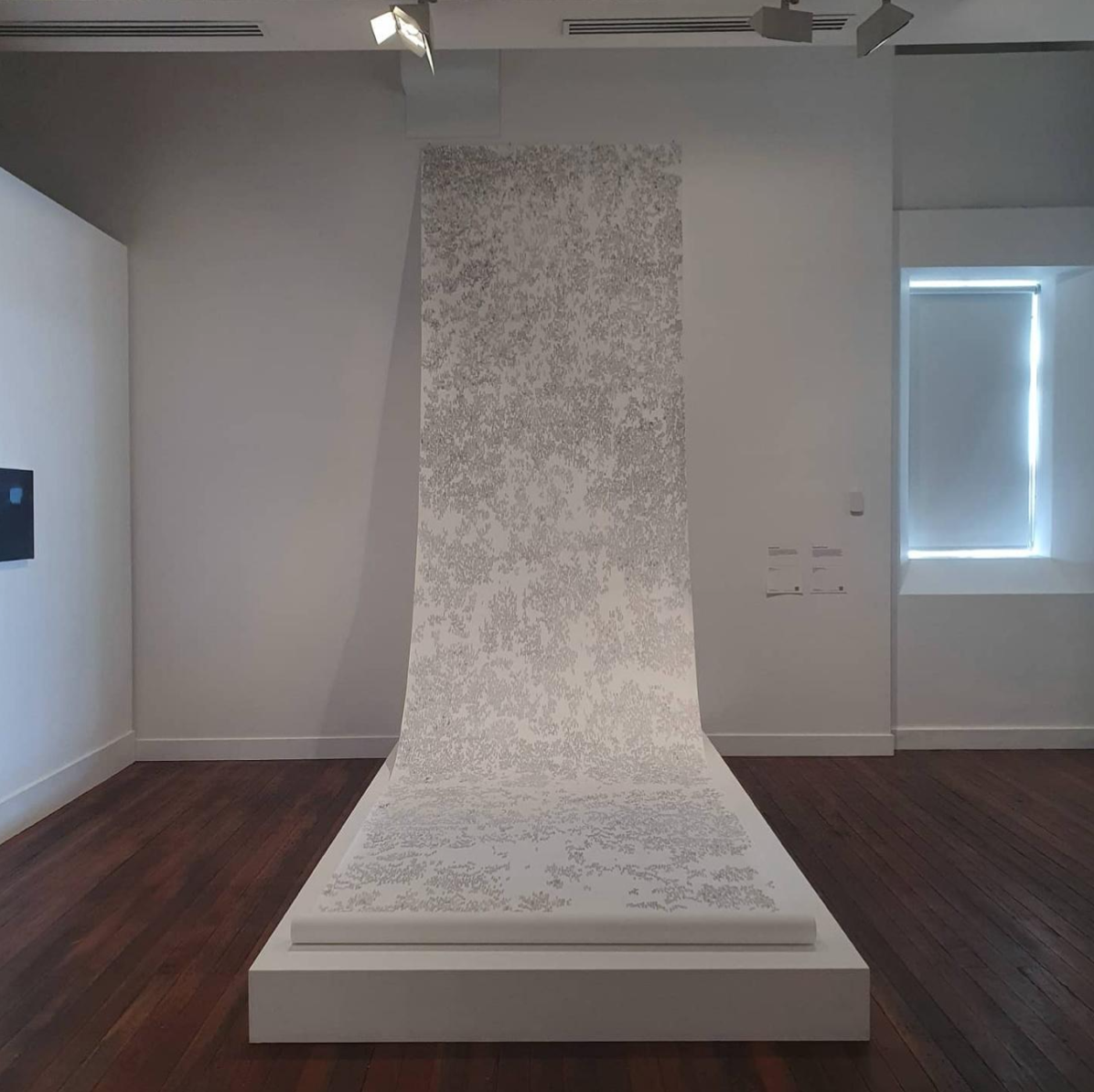Interview with Esther Song
Yeseul Choi
Esther Kim’s work explores the individual reminiscence of her collection of past experiences and events. Her work is a personal recollection of experiences and events that can only be fully understood by her, the artist. She records her memories on a roll of paper with a fragmented timeline. Enjoy meeting the artist in this interview as she shares her work.
Can you tell us a bit about your work?
The lines are a depiction of my time with my memories embedded in them as I draw. The different lines reflect different moments and surroundings I experience. It is thousands of lines on paper with a fineliner pen. I like to use a pen to create art because it cannot be “fixed”. It's permanent and is a moment that has been visually marked. I usually prefer pencil to any other art medium because I can rub it out. But with a pen I can't. While creating my work there were many times that I attempted to “fix” the lines that I was not satisfied with. I would fix it by drawing new more “perfect” lines on top of the existing lines that were drawn in pencil.
What are the lines about?
The lines are there instead of words. I mark as I go while time passes me. I usually do a whole bunch of lines at a time. Which connects to another bunch and it gets bigger and bigger.
How did you come up with the line idea?
I like drawing lines.
Like using the tally marks and short lines are easy to use.
While I was working on my artwork I was watching a whole movie series and other visual and audio aids. While I was drawing and watching there were alot of gun scenes and fighting.
My lines would get close together and faster. At other times when the scenes were not as chaotic my drawing pace would slow down matching the pace of the scenes and becoming less rigid.
Who were your inspirations?
Tehching Hsieh, On Kawara, La Monte Young, Nam June Paik and Locus Jones.
How was the creative process?
I would be standing around the paper as well as sitting on the paper which was placed on a table. Depending on what part I was working on, my position would change quite frequently.
When we were allowed to go into our studios during the COVID lockdown, I stayed as late as possible. I would stay back until the school cleaners came and occasionally they would sometimes turn off the lights. When this happened as well as other similar instances some of the lines were wonky so then I would leave the studio.
Your work explored memories and time. Could you tell us a bit more about those experiences?
A group of lines is an island. Islands are 1 day or 1 sitting. Some days started from morning to night. Some islands are only 5 lines long. Sometimes I would go back to an island to finish a thought. I was scared of forgetting stuff. Scared of not remembering things in the past - kind of like a diary. I used a diary a lot of the time. My work came from that. I drew lines instead of writing words. It is a diary that only I can read and understand.
How did you decide on the size of the artwork?
I had a preference that it has to be really big or really small. Since it was a project that had a long time frame, I wanted to create a large work. Big projects give me more to think about and draw. When you write in a small notebook, there's so much to write. When you write in a big notebook there's so much more room to work with.

ABSTRACT
“My work embodies the moments of my lived experience of time, which I express through drawing lines. The variety of thoughts I have had at the time transforms into lines that are on the roll of paper. The thousands of lines become an evidence of my time. I use a 0.1 Fineliner pen to draw because I enjoy the feeling of the strokes being drawn on the paper and seeing the tip of the pen vanish over time. The lines are affected by many different things that happen throughout the day, and new lines are created every day.
The lines became a focus point and a vessel for my thoughts that allow me to collect them over time. Moments of peace come to me when my thoughts have been sorted out. Some days while drawing,
my thoughts become too loud and the feeling of time passing proved too overwhelming for me. With the help of background sounds such as movies, music or conversations I was able to overcome this difficulty. The background noises kept me “on track” and helped me feel safe from negative situations and overthinking.”
Esther Kim's work reflects reminiscent thoughts through something simple such as a line. The lines create a fascinating array of thoughts and memories from the viewer reminiscing moments that replay in their minds. She leads the viewer on with the unrolled paper portraying future memories and thoughts that one will encounter and shares the same sentiment as the artist of "forgetting memories".
Esther is currently not working on any projects but all of her works can be viewed on her Instagram @songha.esther.

